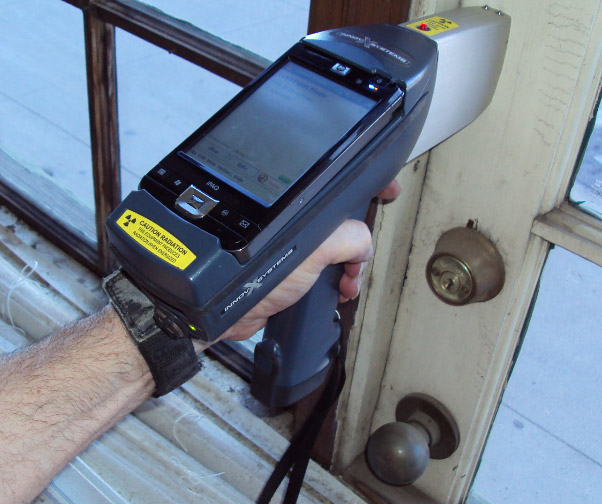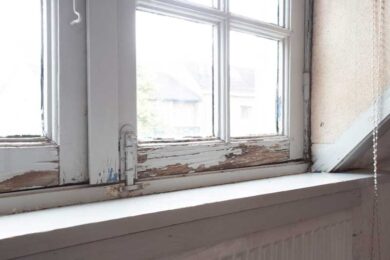Best Practices for Making Sure Safe and Thorough Lead Infraction Reduction
Dealing with lead offense abatement needs a multi-faceted approach to ensure both security and conformity. Initial evaluations making use of advanced detection approaches such as XRF analyzers established the stage for an accurate understanding of contamination degrees. Including proper containment strategies, consisting of airtight barriers and HEPA filtering, paired with the usage of personal protective devices (PPE) for employees, creates the foundation of a secure operation. Careful cleaning methods, including HEPA vacuuming and wet-wiping, are essential. It's the last clearance procedure, involving comprehensive examinations and lab screening, that genuinely verifies a lead-free atmosphere, making sure long-lasting security. Exactly how do these methods interconnect to guarantee extensive lead abatement?

Preliminary Assessment
Carrying out an initial analysis is an important initial step in lead infraction abatement. This stage encompasses a thorough examination of the home to identify the existence, extent, and certain locations of lead-based dangers. Qualified experts, such as certified lead examiners or risk assessors, must perform a detailed site assessment, utilizing tools like X-ray fluorescence (XRF) analyzers to properly spot and gauge lead concentrations in paint, dust, dirt, and water.
The assessment needs to additionally include a testimonial of the building's history, previous records, and any kind of grievances or health and wellness concerns reported by residents - Lead Removal Contractors. Documenting the findings meticulously is essential, as these records form the basis for developing a reliable reduction method. A thorough assessment additionally involves tasting and lab evaluation, which are important to validate the existence of lead and guide subsequent actions
Additionally, it is essential to communicate the results transparently to all stakeholders, consisting of homeowner, tenants, and governing authorities. By ensuring that the preliminary assessment is conducted with accuracy and rigor, professionals can lay a solid foundation for a targeted and effective lead reduction process, eventually guarding public wellness and guaranteeing conformity with regulative requirements.
Appropriate Control
Appropriate containment is essential to stop the spread of lead pollutants during abatement activities. Effectively managing control lessens the danger of lead dust and debris migrating to non-work locations, consequently protecting both the environment and people outside the prompt work zone. To accomplish proper containment, an impermeable obstacle of plastic sheet must be established around the workplace, ensuring all joints and edges are firmly sealed. Lead Removal Contractors. This obstacle should expand from floor to ceiling and be taped to prevent any type of leakages.

Regular assessments of the control location are required to inspect for violations or weaknesses in the barrier. Any type of recognized concerns must be without delay addressed to keep the honesty of the control. By adhering to these techniques, reduction jobs can efficiently manage lead contamination and alleviate involved wellness threats.
Employee Defense
Guaranteeing employee security is extremely important during lead reduction tasks to stop work-related exposure to dangerous lead fragments. Essential procedures consist of the use of personal protective equipment (PPE) such as respirators, handwear covers, and full-body suits particularly designed to block lead dust and fumes. Employees must undertake comprehensive training on the right usage and upkeep of PPE, consisting of fit testing for respirators to make sure maximum efficiency.
Engineering controls, such as neighborhood exhaust ventilation systems, are important in lessening airborne lead focus in the job environment. Administrative controls ought to also be applied, consisting of limiting the duration of direct exposure and rotating workers to reduce individual exposure times. Regular clinical security check these guys out and biological surveillance are essential for very early discovery of lead absorption, enabling timely intervention and treatment.
Additionally, establishing a decontamination procedure is crucial. Workers should comply with rigorous purification procedures before breaks and at the end of their shift to avoid lead dirt from being brought outside the job area. This includes complete hand and face washing with lead-specific cleaning agents and altering out of polluted apparel.
Thorough Cleaning
Keeping a secure job environment prolongs past employee defense and encompasses careful cleaning to ensure lead fragments are extensively removed from the site. The process of careful clean-up is crucial in avoiding the recontamination of the mellowed out location and protecting both present and future passengers.
To accomplish an extensive cleanup, all workplace need to be systematically decontaminated. This involves making use of specialized HEPA (High-Efficiency Particulate Air) vacuum and wet-wiping techniques to capture and eliminate fine lead dirt that may have picked surface areas. It is imperative to cleanse all straight surface areas, including floorings, home window sills, and counter tops, in addition to upright surfaces that may have caught lead particles.
Employees have to put on proper individual protective equipment (PPE) during cleanup to stay clear of direct exposure to residual lead dirt. Made Read Full Article use of cleaning products such as wipes, sponges, and wipe heads must be thrown away based on contaminated materials disposal laws.

Last Clearance
Last clearance is the vital concluding phase of lead abatement that figures out whether the site is risk-free for reoccupation. This important action includes detailed assessment and screening to verify that all lead hazards have been successfully removed. The process starts with an aesthetic inspection by a certified lead-based paint examiner or threat assessor to make sure no noticeable dirt or particles stays. This is followed by gathering dust clean examples from numerous surfaces, consisting of floors, windowsills, and other horizontal surfaces. Lead Removal Contractors.

Last clearance testing not only protects future owners however likewise ensures compliance with regional, state, and government guidelines. It offers as a recorded recognition of the reduction contractor's adherence to industry best techniques. Ensuring a thorough and effective final clearance is essential in guarding public wellness and fostering trust fund in the abatement procedure.
Final Thought
Ensuring risk-free and comprehensive lead violation abatement necessitates a diverse strategy encompassing initial evaluations with advanced discovery techniques, effective containment techniques, rigorous employee protection procedures, and precise clean-up procedures. The last clearance stage, featuring in-depth examinations and Read Full Report lab screening, is essential to verify conformity with EPA standards. Adherence to these finest techniques guarantees a secure setting for owners, reduces wellness risks, and upholds governing requirements, therefore promoting public health and wellness and safety and security in lead-affected locations.